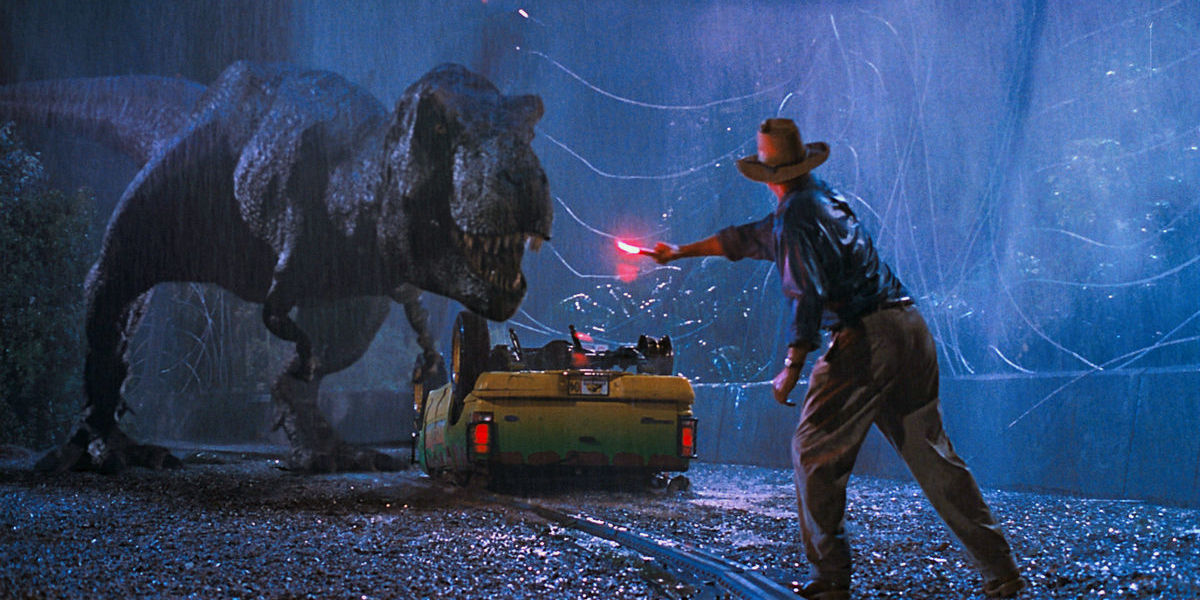In the realm of film production, Jurassic Park holds a special place for many reasons. It showcased anticipated film technology and breathtaking animatronics, which, in combination, yielded remarkably realistic dinosaurs that still leave viewers in awe today. It is a shining beacon of what intricate set designs, top-notch CGI, and a compelling narrative can create: pure cinematic magic.
This article delves deeper into intriguing Jurassic Park production trivia, explores how the famous Jurassic Park T-Rex animatronics were devised, and answers the often-asked question: how were the dinosaurs in Jurassic Park made. So, put on your paleontologist hats, and let's commence this nostalgic journey back to the Jurassic era.
Jurassic Park Production Trivia: A Glimpse behind the Scenes
The staggeringly real dinosaurs and the breathtakingly beautiful "Isla Nublar" made the Jurassic Park an immersive experience, transporting audiences back to prehistoric times. But what many may not know is just how much work and innovation went into creating this iconic film.
Filmmaker Steven Spielberg and his brilliant team amalgamated forethought, creativity, and technological prowess to bring the Jurassic era alive for modern audiences. The production spanned Kauai's tropical environments to sound stages in Hollywood, with the crew working tirelessly to visually decode Michael Crichton's celebrated novel.
Instead of exclusively employing CGI, a mixture of animatronics and puppetry was used to bring various dinosaurs to life, creating a tangible, natural world that audiences could practically touch. Moreover, the crew went to great lengths to depict the dinosaurs accurately, even when it meant redesigning a creature halfway through production to mirror the latest paleontological discoveries.
The Marvel of Jurassic Park T-Rex Animatronics
In the Jurassic Park universe, if any dinosaur has garnered vast recognition and stood as most emblematic, it has to be T-Rex. This colossal predator, brought to life using animatronics, remains etched in the minds of viewers due to its distinct, terrifying roar and imposing presence.
The massive T-Rex was one of the most notable triumphs of the film's production, a feat realized through life-sized models and CGI. The 13,000-pound animatronic T-Rex was a true marvel, a combination of immense steel frameworks, intricate hydraulic systems, and delicate artistry. The detailing was so realistic that it is said to have startled the crew on multiple occasions during the production.
Taming the Beast: The Art and Science of Animatronics
The magic of Jurassic Park lay not only in the story but also overwhelmingly in the realistic representation of long-extinct creatures. This seemingly impossible task came to life through the artistry and expertise of animatronics.
Animatronics essentially means automation. It combines ‘animation’ and ‘mechanics’ to bring inanimate objects to life. The dinosaurs that roared, hissed, and stormed than the ‘Jurassic Park’ series were the result of a meticulous application of this science by a team of engineers, designers, and puppeteers led by Stan Winston, the renowned special effects artist.
Just like an architect’s blueprint, the birth of each dinosaur started with a concept sketch. This phase was crucial as the sketches formed the foundation for the 3D models. The Tyrannosaurus Rex, for instance, started off as sketches before being sculpted into full-scale clay models. These models were then fitted with robotic skeletons and overlaid with specially formulated foam rubber skin that could realistically mimic dinosaur hide.
The Puppets that Roared: Manipulating the Monstrosities
While technology played a significant part in creating the dinosaurs, how they were brought to life on screen was another story. Puppeteers, equipped with control mechanisms, breathed life into these creatures. For instance, the dilophosaurus, which terrified audiences worldwide with its retractable frill and deadly spitting, was, in fact, a puppet worked by two puppeteers.
Inside a full-sized dinosaur model, one puppeteer would control the head and neck movements while another manipulated the body. They carefully synchronized their actions to ensure seamless and fluid movements, creating a close-to-natural simulation on screen.
CGI: Painting the Picture
Creating life-sized animatronics for every scene would have been practically impossible. The solution was groundbreaking special effects and computer-generated imagery (CGI) delivered by Industrial Light and Magic. Together these two methods contributed to the most iconic scenes – the nimble, terrifying, and eerily beautiful gallimimus stampede and the menacing T-Rex chase sequence.
While CGI amplified the scale of the movie, offering stunning, edge-of-seat visual effects, it was the fine balance of all these elements that ultimately contributed to the success of the Jurassic Park series. This blend of models, animatronics, and CGI created an astonishingly realistic world where dinosaurs lived and breathed amongst humans – a world that still enthralls audiences and fans alike.




